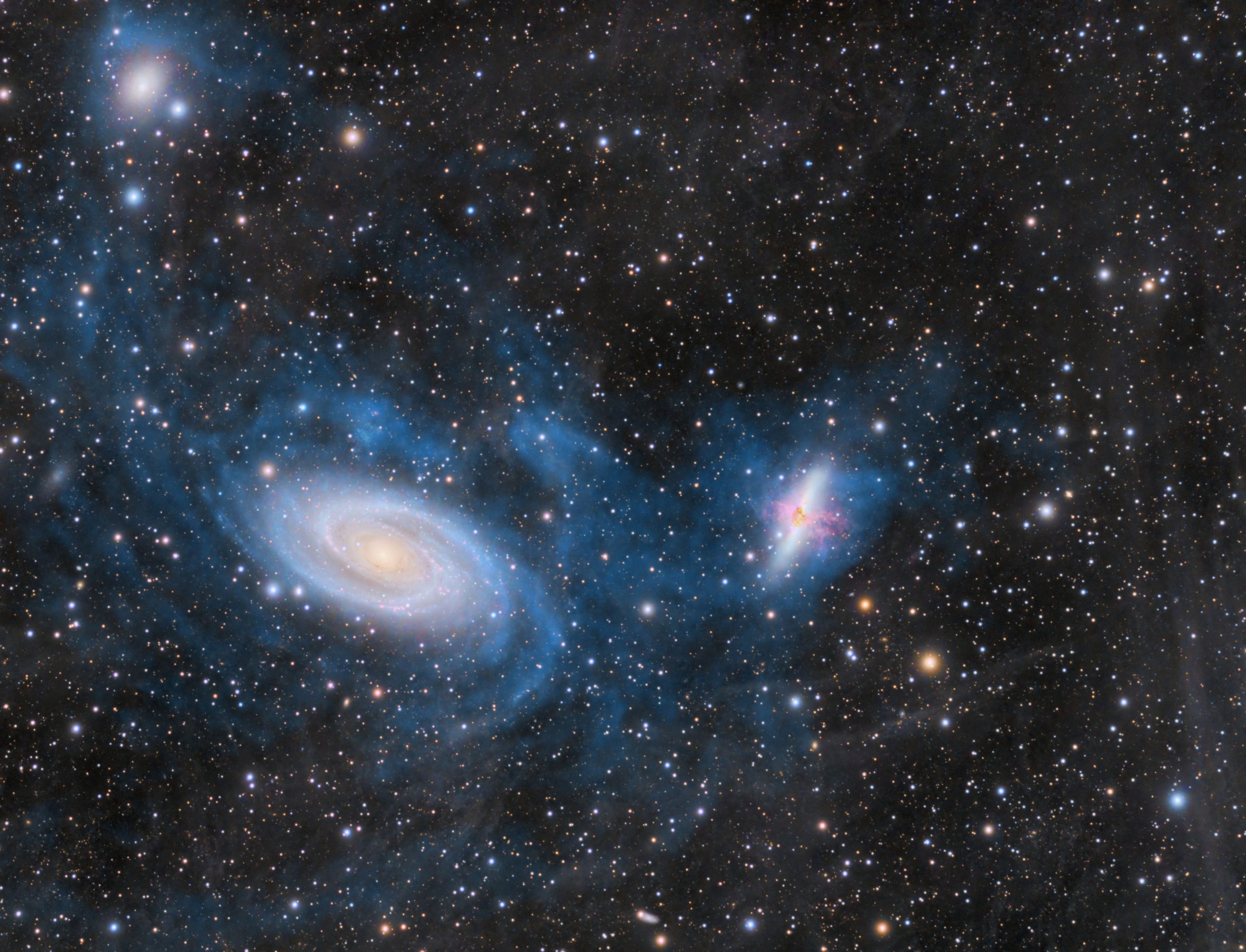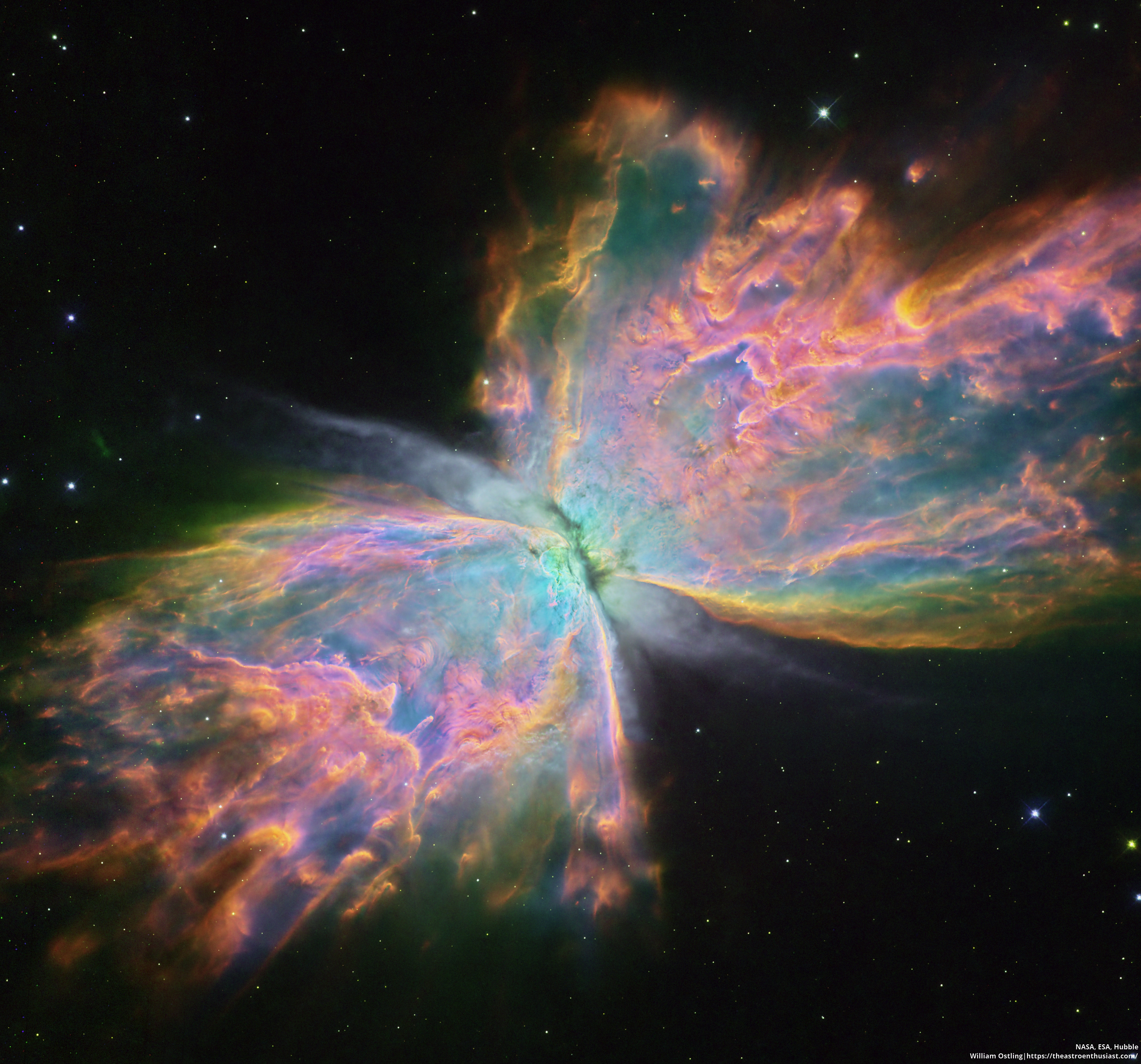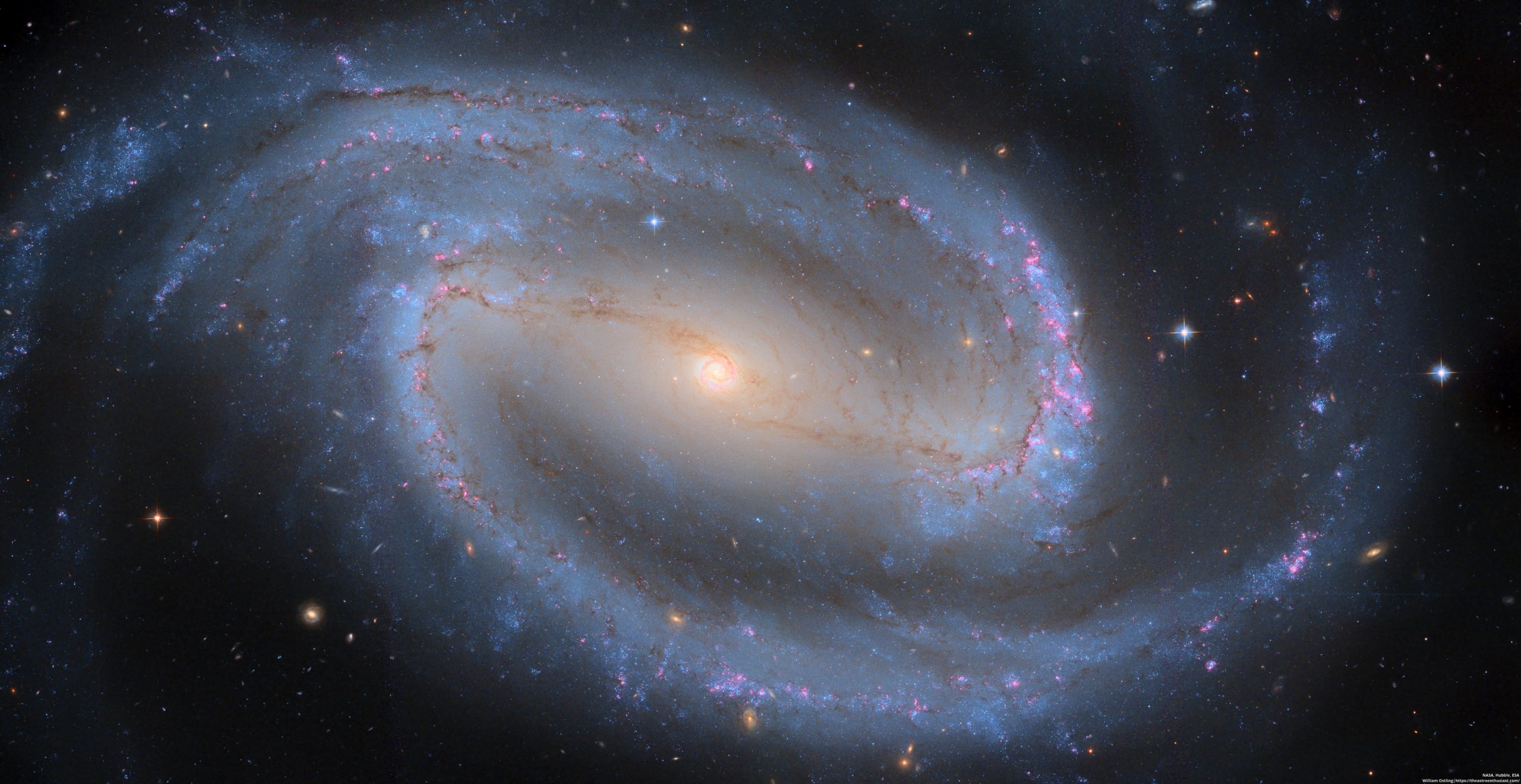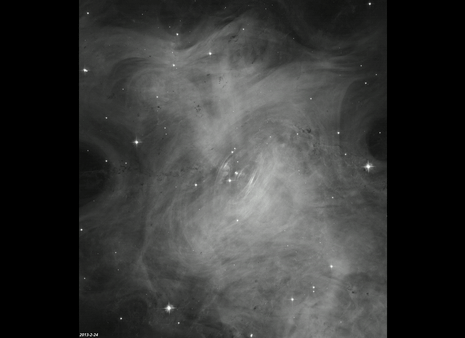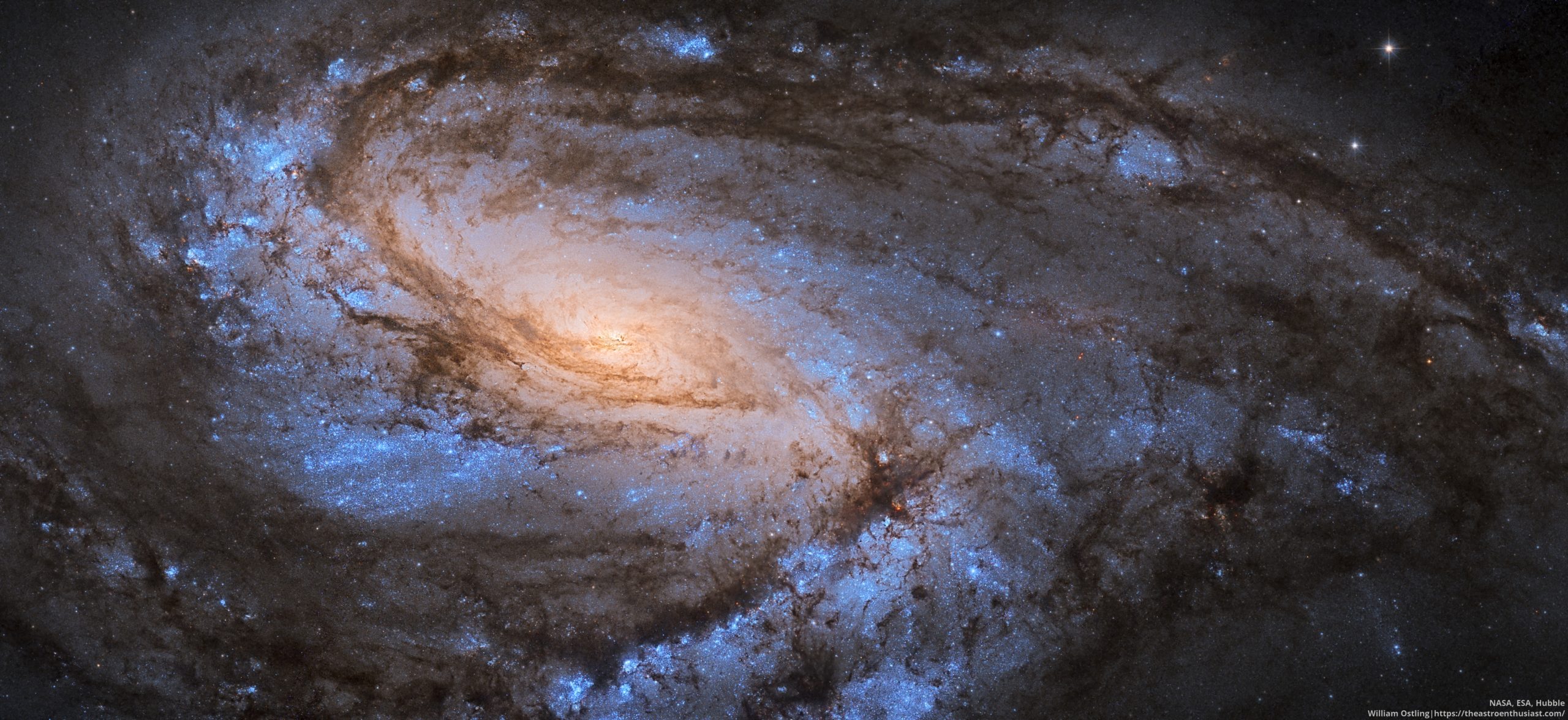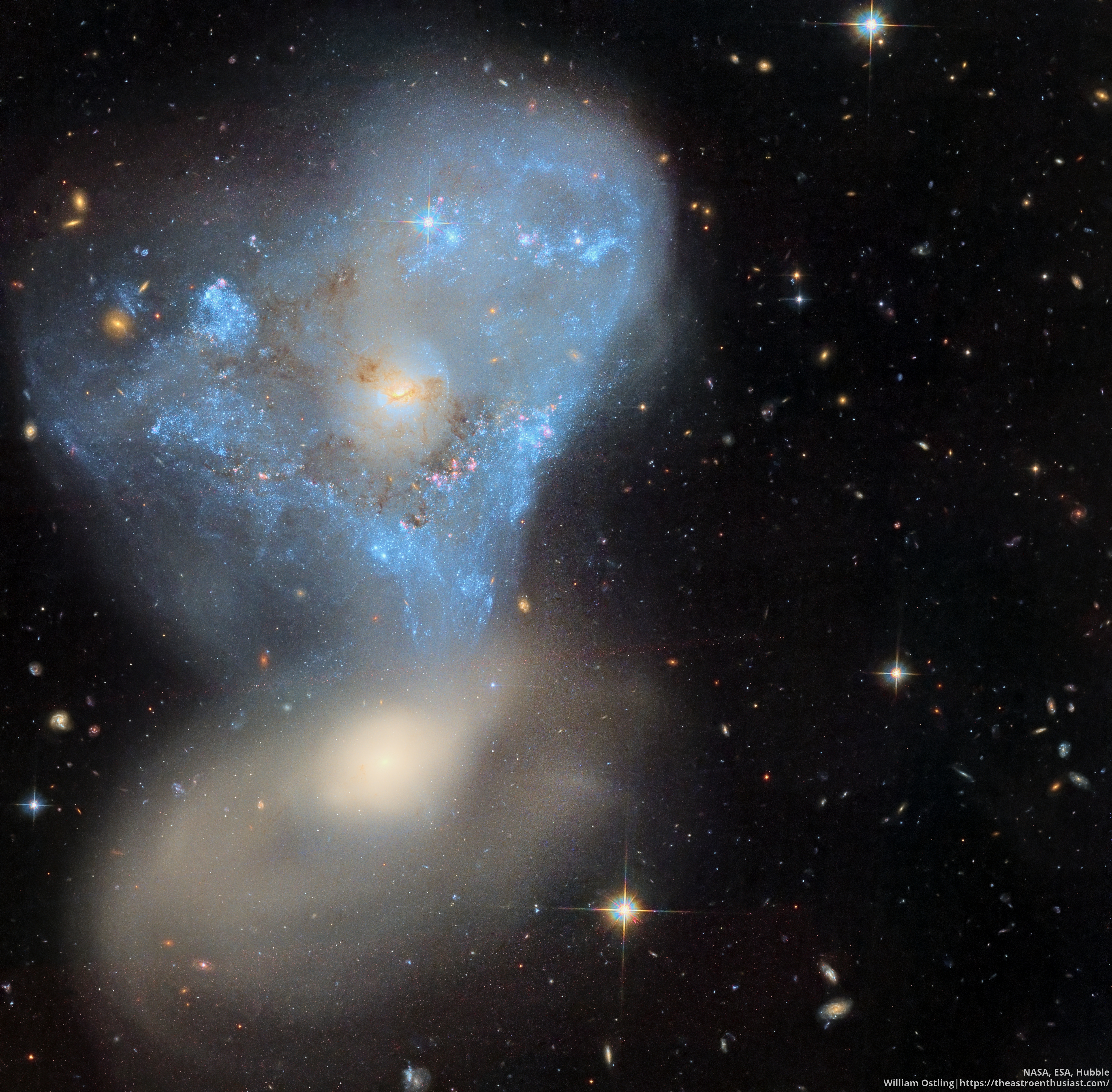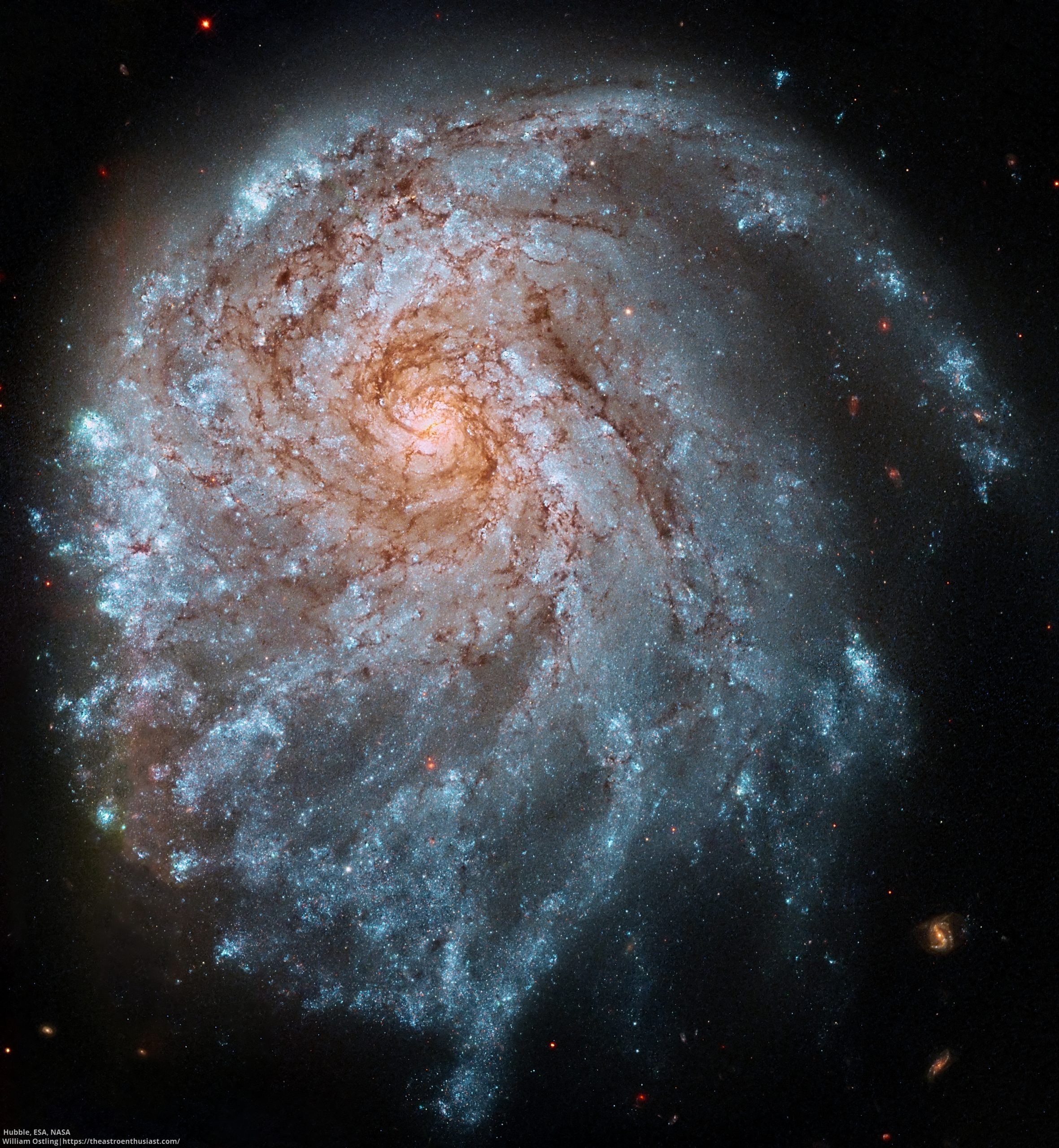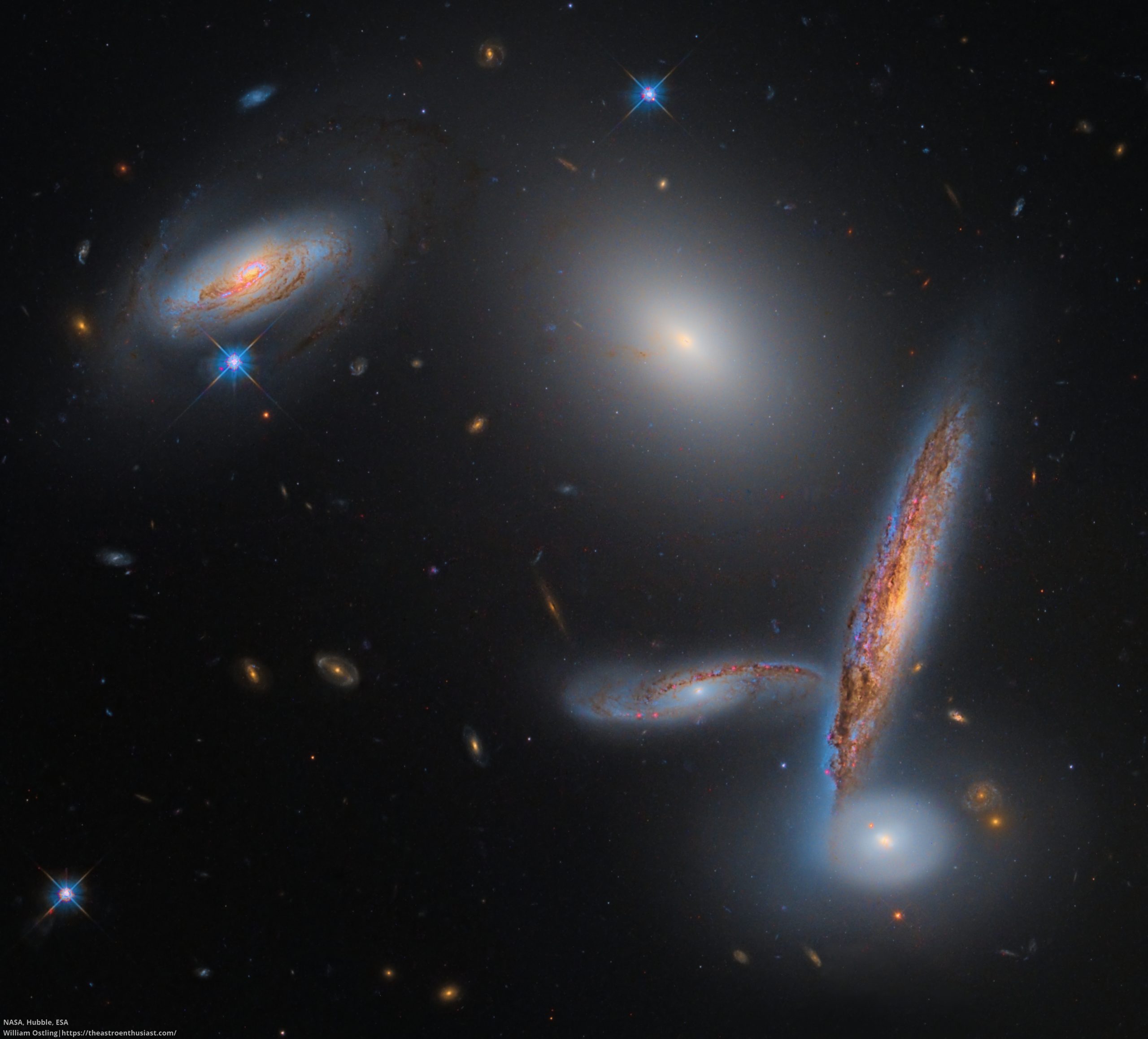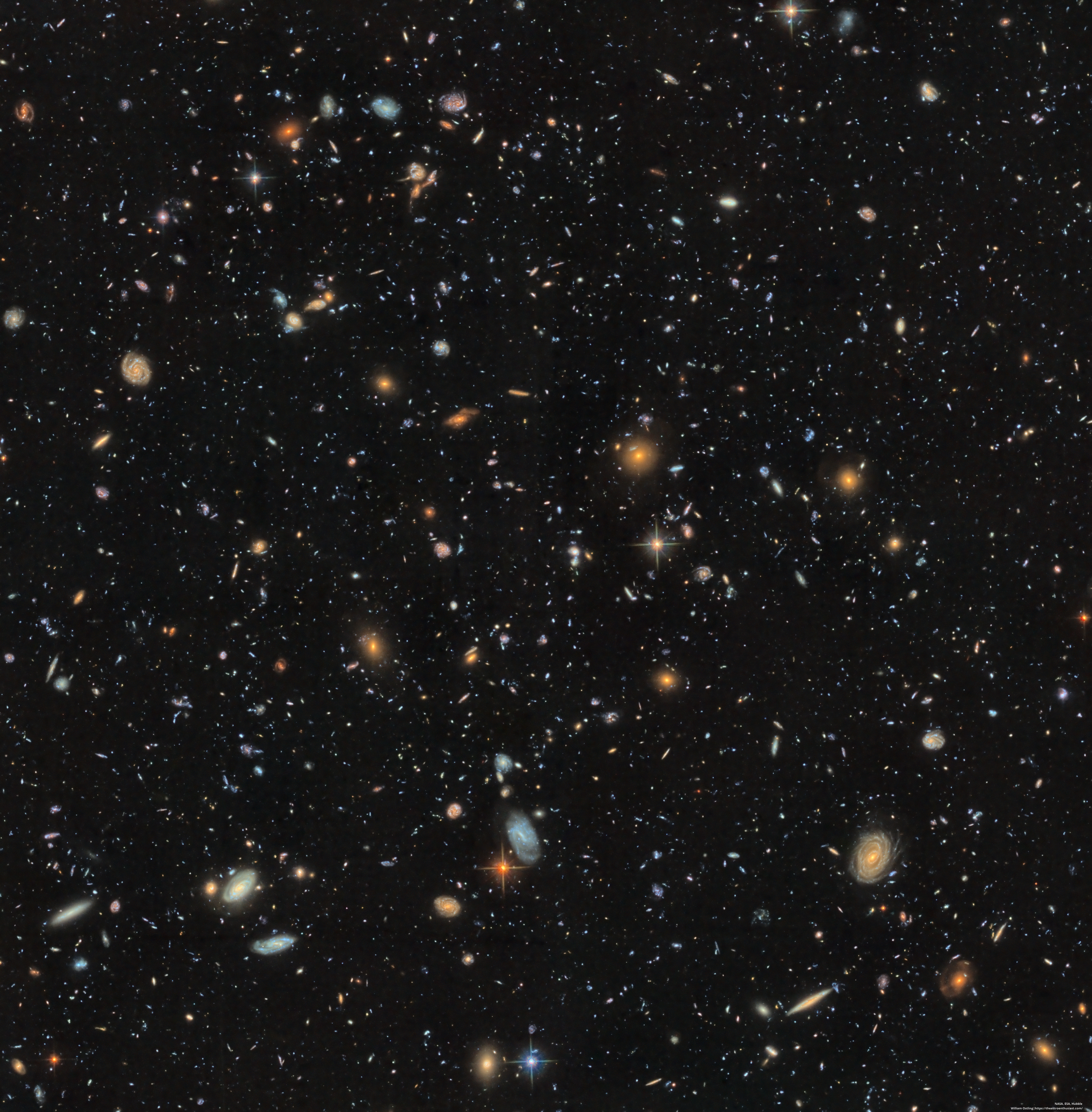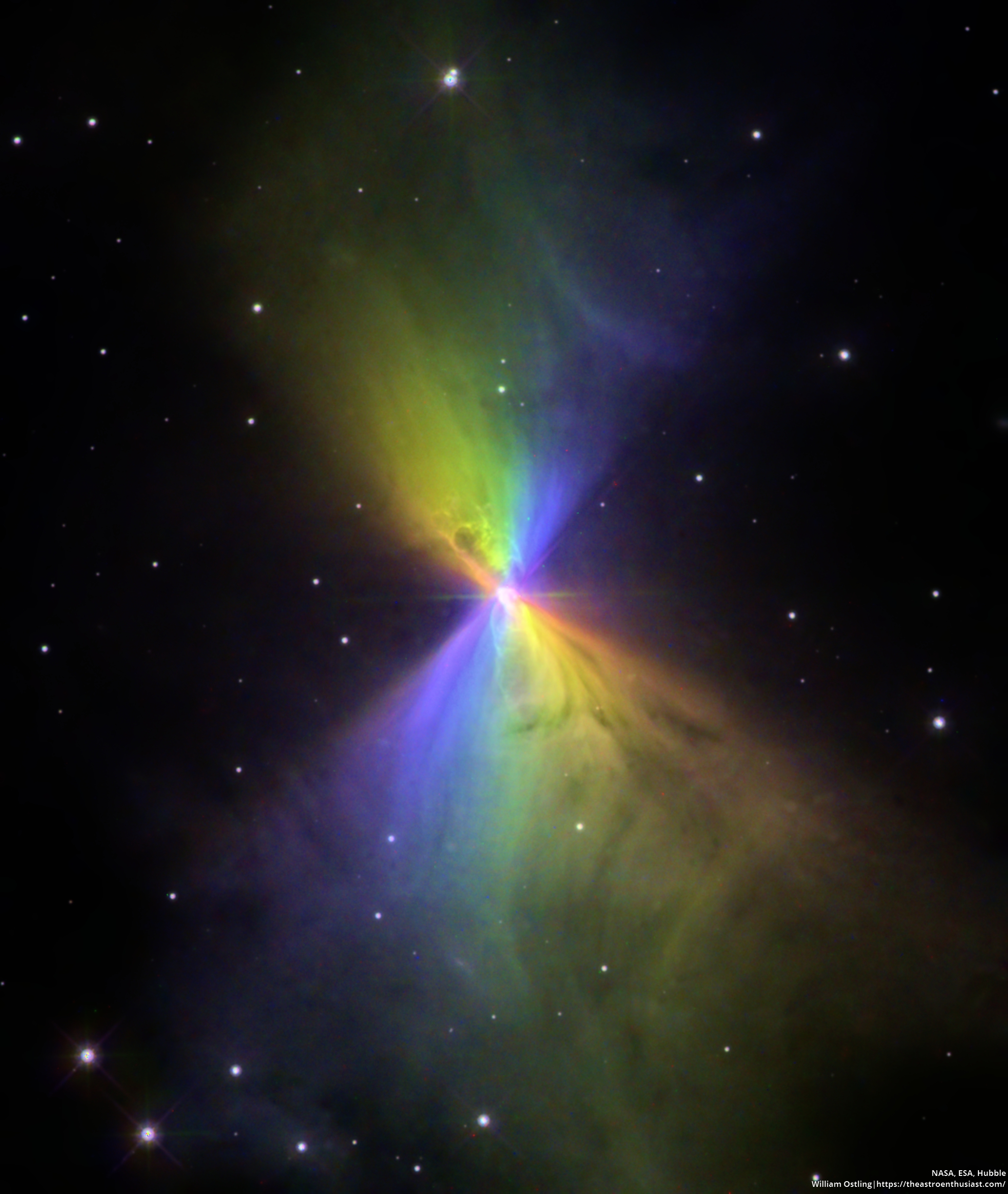The interacting triplet M81, M82, and NGC 3077- An ultra deep 219 hour collaboration detailing the nuanced interaction remnants and galactic cirrus.
This incredibly detailed image of the interacting triplet M81, M82, and NGC 3077 was created from more than 216 hours of exposure across three continents — Europe, USA, and Oceania. We combined 4019 subframes and 12993 minutes of exposure to reveal faint details previously masked by lower amounts of data. The high exposure time also allowed us to sharpen fine features, giving the image more contrast and revealing more fine structures. On the top of the image lies NGC 3077, a small starburst dwarf galaxy with a […]
Read more